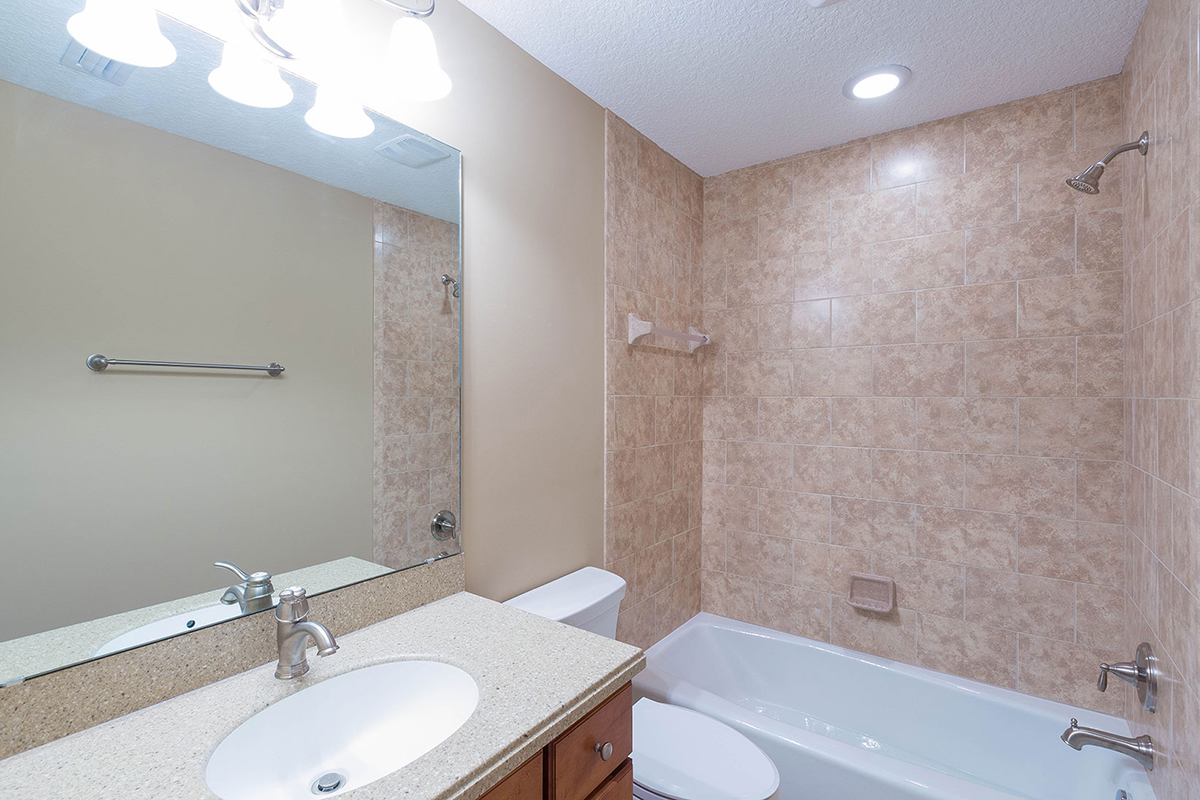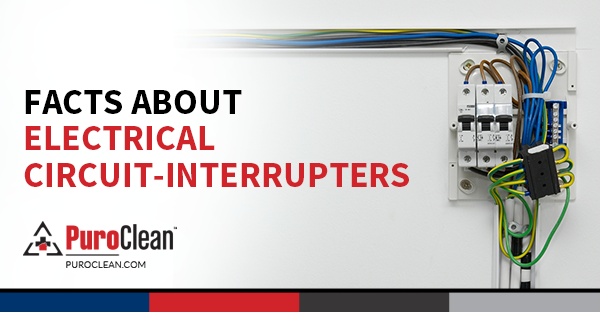Ways to Prevent Water Damage
Your bathroom is more than just a place to start and end your day it’s also one of the most vulnerable rooms in your entire home. Every shower you take, every tooth you brush, and every flush creates moisture that, if not properly managed, can lead to devastating water damage.
Here’s a sobering fact: bathroom water damage accounts for nearly 40% of all residential water claims, costing homeowners thousands of dollars in repairs, mold remediation, and property restoration. What makes this even more frustrating is that most bathroom water damage is completely preventable with the right knowledge and proactive steps.
Whether it’s a slow leak behind your toilet that goes unnoticed for months, condensation building up on your walls, or a catastrophic pipe burst at 2 AM, water damage doesn’t discriminate. It can strike any bathroom, in any home, at any time. The good news? You have the power to protect your sanctuary and your investment.
In this comprehensive guide, we share ten proven strategies to prevent water damage in your bathroom. These aren’t just generic tips they’re battle-tested methods we’ve learned from responding to thousands of water damage emergencies. By implementing these preventive measures, you’ll save yourself from the stress, expense, and disruption that water damage brings.
Let’s dive in and turn your bathroom into a fortress against water damage.
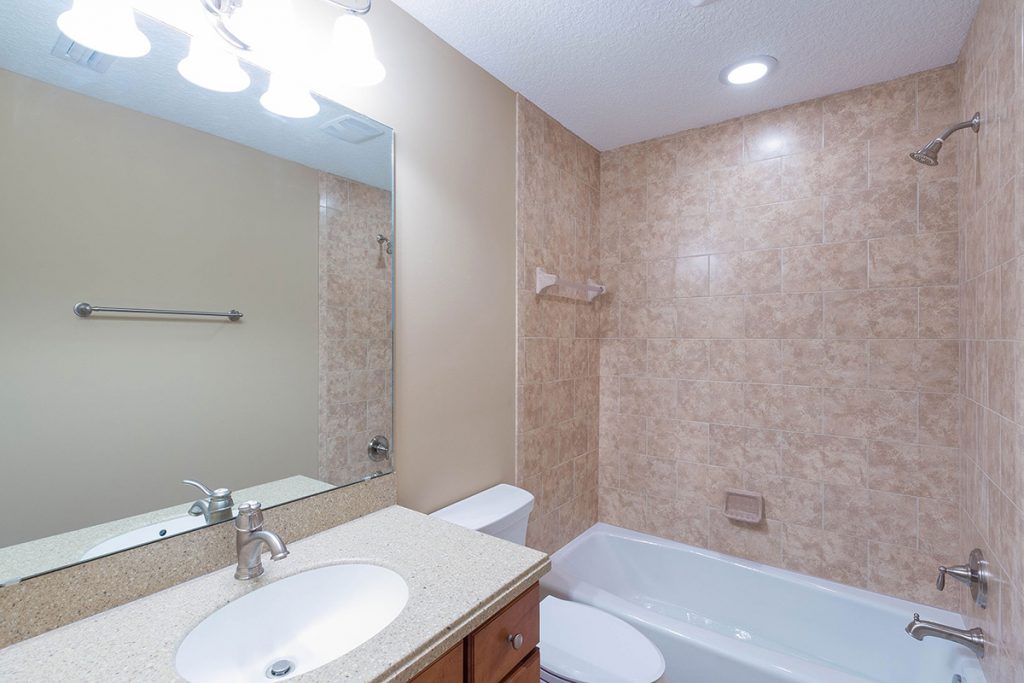
People Also Read : 10 Bathroom Remodeling Renovation Benefits | Expert Review
1. Inspect and Maintain Your Toilet Regularly
Your toilet might seem like a simple fixture, but it’s actually a complex system with multiple points where water damage can originate. A faulty toilet is one of the leading causes of bathroom water damage, yet many homeowners never give it a second thought until disaster strikes.
Check for Leaks at the Base
Walk up to your toilet right now and look closely at the base where it meets the floor. Do you see any water pooling? Does the floor feel soft or spongy when you apply pressure? These are red flags that your wax ring seal has failed, allowing water to seep beneath your flooring with every flush.
What to do: Perform a monthly visual inspection of your toilet base. If you notice water, dampness, or discoloration, call a professional plumber immediately. The longer you wait, the more extensive (and expensive) the damage becomes as water penetrates your subfloor and potentially your ceiling below.
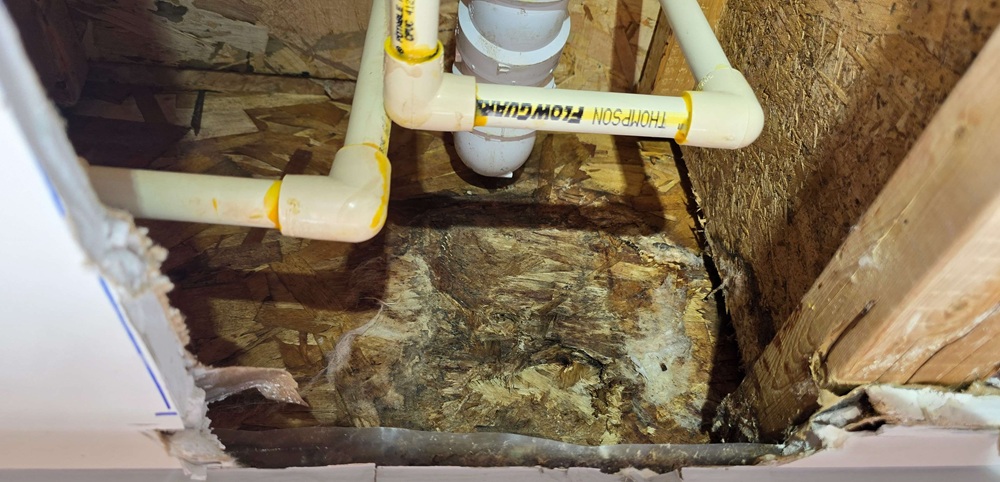
Listen for Running Water
That subtle trickling sound isn’t soothing it’s costing you money and creating hidden water damage. A running toilet can waste up to 200 gallons of water per day while slowly damaging internal components and potentially causing overflow situations.
Pro tip from PuroClean experts: Add a few drops of food coloring to your toilet tank. Wait 30 minutes without flushing. If color appears in the bowl, you have a leak that needs immediate repair.
Replace Supply Lines Every Five Years
Those flexible supply lines connecting your toilet to the wall. They have a limited lifespan. Older rubber lines are especially prone to bursting without warning, unleashing gallons of water across your bathroom floor in minutes.
2. Upgrade to Water-Resistant Materials
Not all bathroom materials are created equal when it comes to water resistance. Making smart choices about the surfaces in your bathroom can be the difference between a minor cleanup and a major restoration project.
Choose the Right Flooring
Imagine this scenario: Sarah installed beautiful hardwood flooring in her bathroom during a renovation. Six months later, after a shower leak went unnoticed, she discovered warped boards, mold growth, and a $8,000 repair bill. The culprit? The wrong material for a high-moisture environment.
Better alternatives for bathroom flooring:
- Porcelain or ceramic tile with proper waterproof underlayment
- Luxury vinyl plank (LVP) designed for wet areas
- Natural stone with appropriate sealing
- Sheet vinyl with sealed seams
Waterproof Your Walls
Standard drywall absorbs water like a sponge. In bathrooms, especially around showers and tubs, moisture-resistant or waterproof materials are essential.
PuroClean recommends: Install cement board or green board (moisture-resistant drywall) in wet areas. Follow up with a waterproof membrane before tiling. This multi-layer approach creates a barrier that prevents water from reaching structural components.
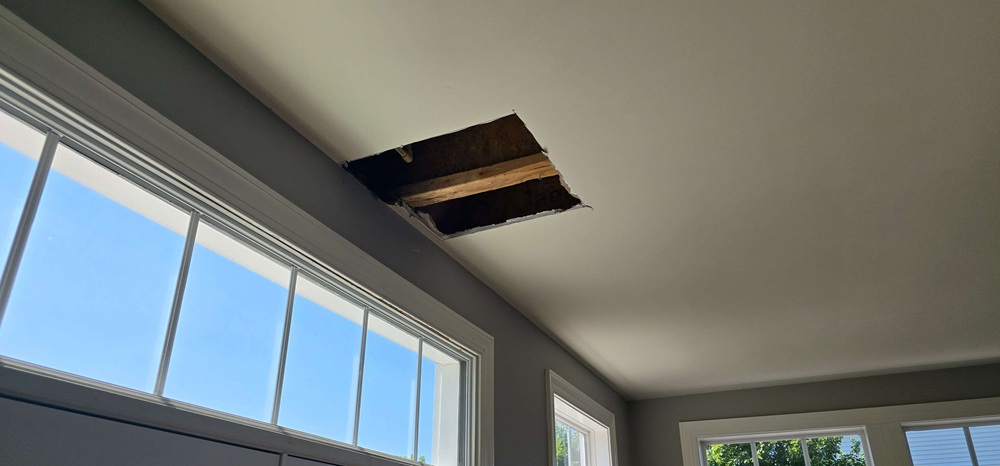
3. Maintain Your Shower and Bathtub Properly
Your shower and tub area experiences the most direct water exposure in your entire home. Without proper maintenance, this daily deluge can cause serious damage over time.
Re-Caulk and Seal Regularly
That dingy, cracked caulk around your tub isn’t just ugly it’s an open invitation for water to infiltrate your walls. Once water gets behind your tile or tub surround, it creates the perfect environment for mold growth and structural decay.
Action plan: Inspect your caulk lines every three months. Look for gaps, cracks, discoloration, or separation. Plan to completely remove and replace caulk every 1-2 years, or immediately if you notice any compromise.
Address Grout Issues Promptly
Grout is porous by nature, which means it can absorb water if not properly sealed. Cracked or missing grout creates direct pathways for moisture to reach the wall structure behind your beautiful tile work.
Expert technique: After cleaning your grout thoroughly, apply a penetrating grout sealer annually. This simple 30-minute task can prevent thousands of dollars in water damage down the road.
Install a Shower Door Properly
A poorly installed or maintained shower door can direct hundreds of gallons of water onto your bathroom floor over time. The weatherstripping along the bottom and sides deteriorates with use, creating gaps that allow water to escape.
4. Ensure Proper Ventilation
Moisture is water damage’s sneaky cousin. While flooding and leaks are obvious, humidity and condensation work slowly and silently, creating conditions for mold, wood rot, and structural damage.
Use Your Exhaust Fan Correctly
Here’s what most homeowners don’t realize: your bathroom exhaust fan should run during your shower and for at least 20-30 minutes afterward. This extended runtime is crucial for removing moisture-laden air that lingers long after you’ve turned off the water.
PuroClean insight: We routinely find severe mold growth in bathrooms where homeowners have a perfectly functional exhaust fan—they just never use it. Make it a non-negotiable habit.
Upgrade Your Ventilation System
Not all exhaust fans are equal. An undersized or old fan won’t adequately remove moisture, especially in larger bathrooms or those without windows.
Proper sizing guideline: Your bathroom fan should provide at least 1 CFM (cubic feet per minute) per square foot of bathroom space. For bathrooms over 100 square feet, or those with jetted tubs, increase this ratio.
Open Windows When Possible
Natural ventilation is free and effective. When weather permits, crack a window during and after showers to allow humid air to escape and fresh air to circulate.
5. Monitor and Fix Pipe Leaks Immediately
Hidden pipe leaks are water damage ninjas they work in the darkness behind your walls, under your floors, and above your ceilings, causing extensive destruction before you even know they exist.
Know the Warning Signs
Michael thought his water bill increase was due to summer lawn watering. Two months later, he discovered a pinhole leak in a pipe behind his bathroom vanity had created extensive mold growth and ruined the adjacent bedroom wall. The total damage? Over $15,000.
Red flags that indicate hidden leaks:
- Unexplained increases in your water bill
- Musty odors in your bathroom
- Water stains on walls or ceilings below your bathroom
- Peeling paint or wallpaper
- Sounds of running water when no fixtures are in use
- Warm spots on floors (indicating hot water leaks)
Conduct Regular Inspections
Once every three months, get down on your hands and knees and inspect under your bathroom sink. Check for moisture, corrosion, or water stains on the cabinet floor. Run your hand along visible pipes feeling for dampness.
Address Issues Immediately
When you discover a leak, time is your enemy. What might be a $200 plumbing repair today could become a $10,000 restoration project in three months. PuroClean responds to this scenario constantly—don’t become another statistic.
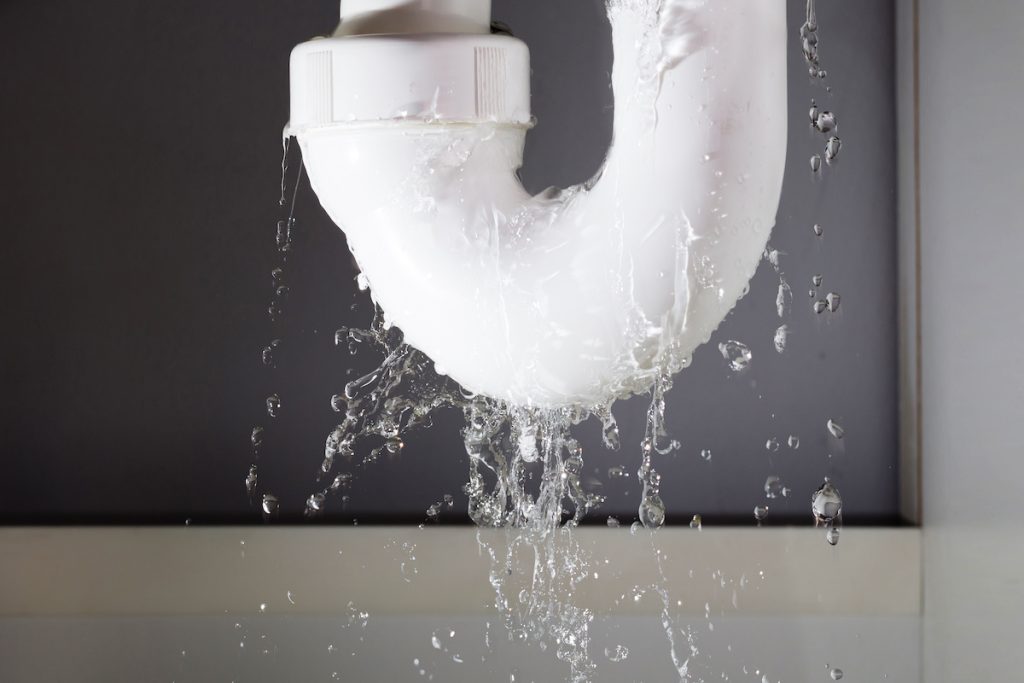
6. Install Water Detection Devices
Technology has given us an affordable early warning system for water damage. These small devices can alert you to problems before they escalate into disasters.
Smart Water Sensors
Today’s water sensors are sophisticated, WiFi-enabled devices that send alerts directly to your smartphone. Place them in strategic locations: under your sink, near your toilet, and along the base of your shower or tub.
Real-world example: Jennifer’s water sensor alerted her to a slow leak under her vanity while she was at work. She called a plumber immediately, preventing what would have been significant floor and wall damage. The sensor cost $40. It saved her thousands.
Automatic Shut-Off Valves
For ultimate protection, consider installing a whole-home water monitoring system with automatic shut-off capability. These systems detect unusual water flow patterns and can shut off your main water supply, preventing catastrophic damage from burst pipes or major leaks.

7. Prevent Shower and Bathtub Overflows
It sounds simple, but tub and shower overflows cause surprising amounts of damage each year. A moment of distraction can lead to hundreds of gallons of water spreading across your floor.
Never Leave Running Water Unattended
We’ve all done it you start running bath water, intend to check on it in “just a minute,” and suddenly remember 15 minutes later when you hear water dripping through your dining room ceiling. This scenario plays out in American homes every single day.
Prevention strategy: Set a timer on your phone whenever you run bath water. Make it a rule: if you’re running water, you’re in the bathroom.
Install a Tub Overflow Drain Guard
These inexpensive devices provide an additional layer of protection by enhancing your tub’s overflow drain capacity.
8. Address Condensation Problems
Condensation might seem harmless just some fog on your mirror, right? Wrong. Chronic condensation creates the perfect breeding ground for mold and gradually damages paint, drywall, and wood trim.
Reduce Humidity Levels
In addition to proper ventilation (mentioned earlier), consider using a small bathroom dehumidifier if you live in a humid climate or have persistent condensation issues.
Wipe Down Surfaces
After hot showers, quickly wipe down tile walls, glass doors, and mirrors with a squeegee or towel. This simple 60-second habit removes moisture before it can cause problems.
Insulate Pipes
Cold water pipes that “sweat” due to temperature differences contribute to overall bathroom moisture. Inexpensive foam pipe insulation eliminates this issue entirely.
9. Maintain Your Bathroom Fixtures
Every fixture in your bathroom has components that wear out over time. Regular maintenance keeps small problems from becoming big disasters.
Check Faucet Connections
Those connections where your faucet meets the counter and where supply lines connect underneath require periodic tightening and inspection. Even a small drip represents gallons of wasted water and potential damage over time.
Replace Old Fixtures Proactively
If your fixtures are more than 15-20 years old, consider replacing them before they fail. The cost of a new faucet or showerhead is minimal compared to the water damage and emergency repairs caused by a catastrophic failure.
Service Your Water Heater
While not technically a bathroom fixture, your water heater directly impacts bathroom water damage risk. Flush it annually, check the pressure relief valve, and replace it before the end of its expected lifespan (typically 10-15 years).
10. Create a Bathroom Maintenance Schedule
The difference between homes that experience water damage and those that don’t often comes down to consistent maintenance. Creating and following a schedule ensures nothing falls through the cracks.
Monthly Tasks
- Inspect toilet base and connections for leaks
- Check under sinks for moisture or damage
- Test bathroom exhaust fan operation
- Look for signs of mold or mildew
Quarterly Tasks
- Inspect caulk and grout for damage
- Check supply line conditions
- Review water detection device batteries
- Deep clean to identify hidden issues
Annual Tasks
- Re-seal grout lines
- Replace caulk as needed
- Service exhaust fan (clean and inspect)
- Professional plumbing inspection
PuroClean recommendation: Set reminders on your phone calendar so you never forget these critical maintenance tasks.
Conclusion: Prevention Is Your Best Investment
Water damage doesn’t happen overnight it’s usually the result of small problems ignored, subtle warning signs missed, and routine maintenance deferred. The ten strategies outlined in this guide empower you to take control of your bathroom’s health and protect your most valuable asset: your home.
Remember Michael, who ignored his rising water bill? Sarah, who chose the wrong flooring? Jennifer, who invested in a simple water sensor? The difference between costly disaster and minor inconvenience often comes down to awareness, vigilance, and action.
Implementing these preventive measures doesn’t require special skills or a huge budget. It requires commitment to protecting your home and the discipline to stay consistent with maintenance routines.
When Prevention Isn’t Enough, PuroClean Is Here
Despite your best efforts, water damage can still occur. A sudden pipe burst, an appliance failure, or storm damage doesn’t wait for a convenient time. When water damage strikes your bathroom, every minute counts. The longer water sits, the more extensive the damage becomes, and the higher the risk of dangerous mold growth.
PuroClean’s 24/7 emergency water damage restoration services include:
- Immediate water extraction and drying
- Advanced moisture detection and monitoring
- Mold prevention and remediation
- Complete structural repairs and restoration
- Insurance claims assistance
Don’t wait until minor water damage becomes a major crisis. If you notice any signs of water damage in your bathroom or anywhere in your home contact PuroClean immediately. Our certified technicians respond quickly with state-of-the-art equipment and proven restoration protocols to return your home to pre-loss condition.
Call PuroClean today for a free consultation or emergency water damage restoration: 1-800-PURO-CLN
Remember: when water damage happens, the Paramedics of Property Damage® are ready to help.
Frequently Asked Questions About Bathroom Water Damage Prevention
How can I tell if there’s hidden water damage in my bathroom?
Look for these telltale signs: musty odors that persist even after cleaning, discolored spots on walls or ceilings, peeling or bubbling paint, soft or spongy floors, unusually high water bills, and visible mold growth in corners or behind fixtures. If you notice any of these symptoms, contact a professional restoration company like PuroClean immediately for a thorough inspection. Early detection can save thousands in repair costs.
How often should I replace the caulk around my bathtub and shower?
You should inspect your caulk every three months and completely replace it every 1-2 years, depending on usage and condition. If you notice any cracks, gaps, discoloration, or mold growth, replace the caulk immediately regardless of age. Quality silicone caulk applied correctly can last up to two years, but high-use bathrooms may require more frequent replacement. Proper caulking is your first line of defense against water infiltration behind tub and shower surrounds.
What’s the most common cause of bathroom water damage?
Toilet leaks are the most common culprit, specifically leaks at the base where the wax ring seal fails. This type of leak often goes unnoticed because it happens slowly beneath the floor surface. Other frequent causes include shower pan leaks, failed caulking around tubs, leaking supply lines, and condensation-related damage from poor ventilation. Regular inspections and preventive maintenance can catch these issues before they cause significant damage.
Should my bathroom exhaust fan run during or after I shower?
Both. Your exhaust fan should run during your entire shower and continue for 20-30 minutes afterward. This extended runtime is crucial for removing moisture-laden air that continues evaporating from wet surfaces after you’ve finished bathing. Many homeowners only run the fan during their shower, which leaves excess humidity in the bathroom to condense on walls, ceilings, and in hidden spaces where mold can grow. Consider installing a timer switch to automate this process.
How much does it cost to repair bathroom water damage?
Water damage repair costs vary dramatically based on severity and duration. Minor damage from a recently detected leak might cost $500-$2,000 for repairs. Moderate damage affecting flooring, walls, and requiring mold remediation typically ranges from $2,000-$10,000. Extensive damage involving structural repairs, multiple rooms, and complete bathroom renovation can exceed $15,000-$30,000. This is why prevention and early detection are so critical they can save you tens of thousands of dollars compared to addressing long-term hidden damage.
Can I prevent all bathroom water damage myself, or do I need professional help?
While homeowners can implement most preventive measures themselves such as regular inspections, caulking, using exhaust fans, and installing water sensors certain tasks require professional expertise. Complex plumbing inspections, major fixture replacements, proper waterproofing installations, and moisture assessment behind walls should be handled by qualified professionals. PuroClean recommends an annual professional plumbing inspection as part of your preventive maintenance strategy, complementing your own regular monitoring efforts.
Protect Your Investment & Restore Your Peace of Mind
Don’t let water damage and potential mold growth overwhelm you. Contact PuroClean of Lansdale today at (267) 834-5900 for a free consultation. We’ll be there to guide you through the restoration process and ensure your property is restored quickly, safely, and efficiently.
